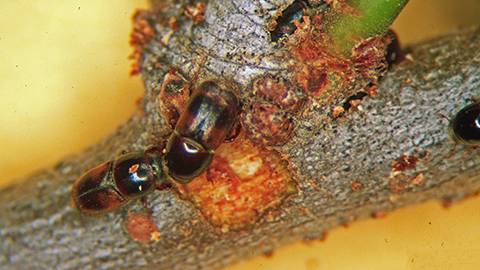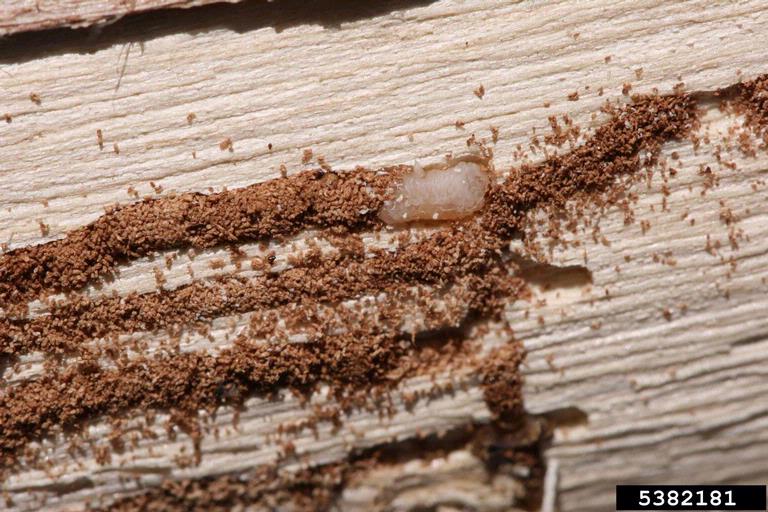Integrated Pest Management
Elm Bark Beetles
 Banded elm bark beetle (Cranshaw, W. Colorado State University. Bugwood.org)
Banded elm bark beetle (Cranshaw, W. Colorado State University. Bugwood.org)
 Elm bark beetle damage (USDA Forest Service, Bugwood.org)
Elm bark beetle damage (USDA Forest Service, Bugwood.org)
 Elm bark beetle larvae damage (Whitney Cranshaw, Colorado State University, Bugwood.org)
Elm bark beetle larvae damage (Whitney Cranshaw, Colorado State University, Bugwood.org)
HOSTS
- American Elm
- Siberian Elm
- English Elm
- Rock Elm
DESCRIPTION
Bark beetles are some of the most devastating insect pests in the world. Closely related to weevils, there are almost 500 species of bark beetles in North America alone, each with unique host plants, habits, and life cycles.
BIOLOGY
The biology of all bark beetles, in general, is similar. Beetles overwinter in a cold hardy stage in the tree between the xylem and bark, or within the bark. Adult beetles emerge in late spring to early summer (May-June). There are between one and three generations per year depending on climate (temperature). Adult beetles emerge from dead or dying, Dutch Elm Disease (DED)-infected trees carrying with them the sticky, viable spores of DED. Transmitting DED to other trees that are newly dead or dying, where they lay their eggs underneath the bark.
SYMPTOMS
- Streaking in the wood
- Sapwood in newly formed branches
- Yellowing/shriveling leaves
- Death of tree
GENERAL MANAGEMENT
Trees should be inspected regularly to find beetles and flagging. Infested trees should be removed, debarked, and the bark destroyed as soon as possible (before beetles emerge). This will reduce beetle populations and hence potential vectors of DED.
INSECTICIDES
Insecticide applications applied to the tree canopy (foliar application) just before adult beetle emergence can minimize introduction of DED, by killing beetles before they transmit the diseases to branch crotches during maturation feeding.

